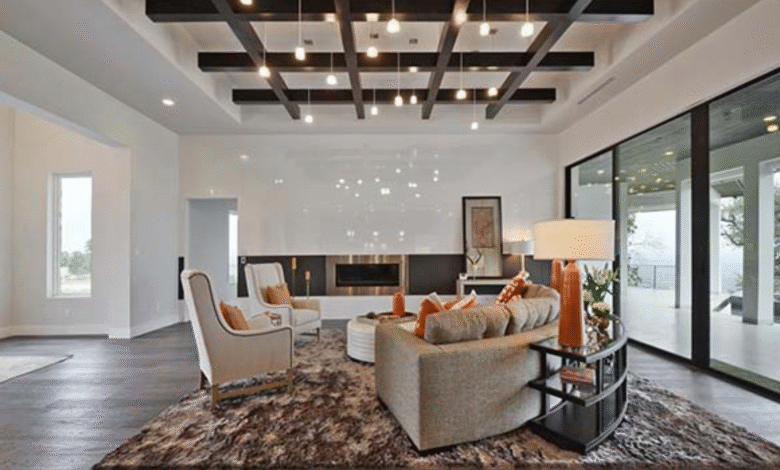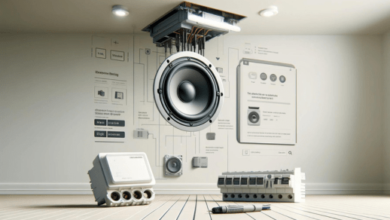Rooms That Tell Stories: Designing Spaces You Actually Want to Live In

Every home has rooms that pull people in — places where conversations stretch late into the night or where mornings start with quiet coffee and sunlight. But not every space is born with that kind of energy. Some rooms feel stiff, awkward, or just… off. The truth is, it’s not always about the size or even the furniture; it’s about design. How a room is planned, styled, and used can completely change the way it feels.
That’s why room design has become such a sought-after service in recent years. People are realizing that their spaces don’t have to feel generic or temporary. They can be tailored, reshaped, and even reborn into something that feels like a natural extension of themselves.
Designing with the city in mind
Minneapolis has its own rhythm when it comes to homes. The winters are long, which means interiors matter more than ever. People spend months inside, so rooms need to be more than just functional — they need to feel alive, comfortable, and adaptable. That’s why so many homeowners are turning to Minneapolis room design services. These aren’t just about picking the right sofa or paint color; they’re about crafting spaces that stand up to everyday life while still feeling inspiring.
Designers here have to think differently. They balance the need for coziness with the desire for open, breathable layouts. They weave in natural light wherever possible and emphasize textures that feel warm and grounding. It’s a mix of practicality and artistry that’s very much rooted in the lifestyle of the city.
The living room as the anchor
If there’s one room that reveals how design shapes experience, it’s the living room. It’s where guests get their first real sense of your home. It’s where families pile together after long days. And it’s often where design mistakes are the most obvious — too much furniture crammed in, poor lighting, or layouts that make conversation feel awkward.
That’s why the role of a living room design company has become so important. Instead of randomly piecing things together, these professionals look at flow, balance, and function. They consider how people naturally gather, whether the room needs to support quiet reading or energetic parties, and how to layer comfort with style. Done well, a living room becomes more than a space; it becomes a magnet for connection.
Beyond decoration: the deeper role of design
A lot of people think design is about decoration — colors, fabrics, or whatever’s trending. But true design digs deeper. It considers how a space is lived in. For example, does your dining room double as a workspace? Then lighting and storage matter differently. Does your bedroom need to feel like a retreat rather than just a place to crash? Then texture, tone, and flow all matter.
This is where design overlaps with psychology. A room that feels cluttered can drain your energy, while a room that flows well can actually boost focus and calm. Good design isn’t about perfection; it’s about creating a space that feels supportive and natural.
Remodeling as an evolution
Sometimes a room needs more than just rearranging. It needs transformation. That’s when homeowners start exploring full-service room remodeling. Unlike surface-level changes, remodeling digs into the bones of a space. It might mean knocking down a wall, adding built-in shelving, or completely rethinking the way the room connects to the rest of the home.
The beauty of full-service remodeling is that it doesn’t stop at “pretty.” It makes structural and functional improvements that last. A cramped kitchen can be opened into a dining space, turning two average rooms into one vibrant hub. A dated basement can evolve into a family room that actually gets used. Remodeling bridges the gap between how a room was built and how it should function today.
The quiet frustrations that design solves
We don’t always realize how much small design flaws affect us. The awkward corner you can’t figure out how to use. The windowless room that always feels dim. The bedroom where the bed never seems to fit quite right. These things feel minor at first, but over time, they chip away at comfort.
Designers spot these issues instantly. They can turn that awkward corner into a reading nook, or reconfigure layouts to maximize natural light. They notice the proportions and rhythms of a room in a way that most of us overlook. It’s not about filling space — it’s about unlocking its potential.
Style meets lifestyle
The best designs don’t just look good in photos; they work in real life. A family with kids needs durable fabrics and smart storage. A young professional might prioritize sleek lines and a dedicated home office setup. Someone who loves to host dinner parties might need a dining room that flows naturally into the kitchen.
Good designers don’t impose their style; they translate yours into a space that works. That’s why the collaboration between homeowner and designer is so crucial. It’s not just about a vision board — it’s about a dialogue.
Why professional help matters
Sure, you can move furniture around and buy a few new lamps. Sometimes that scratches the itch. But when you want a space that truly works — that feels intentional and alive — professional input makes a difference. Designers bring a trained eye, experience, and access to resources most homeowners don’t have.
And more than that, they bring perspective. They can see the big picture, weaving together function, comfort, and aesthetics in ways that most of us can’t when we’re knee-deep in daily life. It’s not indulgent; it’s smart.
The emotional payoff
At the end of the process, whether it’s a small design tweak or a full remodel, the payoff is emotional. Walking into a room that feels right — that feels like it supports your life instead of working against it — changes the way you experience your home. It adds ease, joy, and sometimes even a sense of pride.
And the funny part is, guests might not even know why your space feels so good. They just know it does. That’s the invisible hand of design at work.
Closing thoughts
Rooms are more than square footage and walls. They’re containers for our lives, shaping how we relax, connect, and create memories. Thoughtful design acknowledges that reality and makes spaces work with us, not against us.
Whether you’re refreshing a living room, reimagining a basement, or diving into a full-scale remodel, the essence is the same: crafting spaces that feel authentic. And when you get it right, the house you live in finally feels like home.




